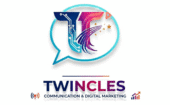In a world saturated with content and competition, customer loyalty has become one of the most valuable assets a brand can have. Yet, loyalty isn’t given—it’s earned through meaningful engagement, consistent value, and above all, personalization. Modern consumers expect personalized attention and meaningful engagement.
This is where personalization in digital marketing plays a transformative role, turning occasional buyers into devoted brand advocates.
What Is Personalization in Digital Marketing?
Personalization refers to tailoring digital marketing messages, content, and experiences to individual users based on data such as their behavior, demographics, preferences, and past interactions. Instead of a one-size-fits-all approach, personalized marketing speaks directly to each customer’s unique needs and interests.
Common forms of personalization include:
– Addressing users by name in emails
– Showing product recommendations based on browsing history
– Sending targeted offers based on previous purchases
– Displaying dynamic website content based on location or user profile
Thanks to advancements in artificial intelligence (AI), data analytics, and customer relationship management (CRM) tools, delivering personalized experiences is more effective and scalable than ever.
Why Personalization Matters
Today’s consumers are bombarded with digital content daily. To cut through the noise, brands must offer something more than just generic promotions or ads. Personalization delivers relevance, and relevance drives engagement.
Here’s why personalization is critical:
– Improves user experience by making content more meaningful
– Increases engagement and conversion rates
– Builds emotional connection with the customer
– Drives repeat purchases and customer retention
Research supports this: According to a study by Epsilon, 80% of consumers are more likely to make a purchase when brands offer personalized experiences.
The Loyalty-Personalization Connection
Loyalty is earned over time through consistent and meaningful customer experiences.
Personalization enhances these interactions at every touchpoint. Here’s how:
1. Builds Trust Through Relevance
When brands show they understand what a customer wants or needs, it builds trust. For example, if a clothing retailer recommends items based on your previous purchases and style preferences, you’re more likely to believe they “get you”—and keep shopping there.
Consistently offering relevant, helpful suggestions shows customers that the brand values their time and preferences, making them feel respected and appreciated.
2. Increases Customer Engagement
Personalized content increases the likelihood that users will engage with emails, ads, and website features. Emails with personalized subject lines are more likely to be opened, and customized product recommendations drive more clicks and purchases.
The more customers engage with your content, the stronger the relationship becomes—and strong relationships are the foundation of loyalty.
3. Enhances the Customer Journey
Every interaction a customer has with a brand contributes to their overall journey. Personalization can improve this journey by delivering timely messages, helpful reminders, and curated content that feels intuitive rather than intrusive.
For example, a fitness app might send personalized workout plans based on user goals and performance data. This enhances the overall experience while promoting continued engagement.
4. Encourages Repeat Purchases
A positive personalized experience significantly increases the likelihood of repeat business.
Brands that use data to remember preferences, streamline reorders, or provide special loyalty rewards can significantly increase repeat business.
E-commerce platforms like Amazon thrive on this principle—suggesting what customers might want next based on previous behavior, making each return visit easier and more rewarding.
5. Fosters Emotional Connection
Loyalty is more than convenience—it’s emotional. When customers feel a brand truly understands them, they develop a sense of attachment. Personalization, done right, can foster that emotional bond.
For instance, a personalized thank-you message, birthday discount, or acknowledgment of a customer milestone (like 1-year of using your service) can turn a regular customer into a loyal fan.
Real-World Examples of Personalization Driving Loyalty
Several well-known brands have successfully used personalization to build customer loyalty:
– Spotify offers personalized playlists like “Discover Weekly” and “Wrapped” based on listening habits. These features not only boost user engagement but also create emotional experiences that keep users coming back.
– Netflix uses algorithms to recommend shows and movies based on your watch history and ratings. This keeps users engaged and reduces churn.
– Amazon leverages browsing and purchase data to recommend items, offer tailored deals, and streamline the buying process—making repeat purchases effortless.
Each of these companies uses data intelligently to create seamless, customized experiences that increase loyalty.
Best Practices for Personalization
To effectively use personalization for building customer loyalty, brands should follow these best practices:
1. Start with Clean, Ethical Data
Good personalization starts with reliable data. Use trustworthy sources like user signups, purchase history, and behavioral tracking. Ensure transparency in data practices and adhere to privacy laws such as GDPR.
2. Segment Your Audience
Break your audience into segments based on behavior, preferences, or demographics. This allows you to create more targeted and relevant messaging for each group, improving the effectiveness of your campaigns.
3. Personalize Across Channels
Consistency is key. Personalize content not just on your website or email marketing, but also across social media, ads, SMS, and customer service interactions. The more unified the experience, the more customers feel like they’re dealing with a brand that knows them.
4. Use Automation Wisely
Marketing automation tools can help scale personalization without losing the human touch. Set up triggered campaigns (like cart reminders or welcome emails) that respond to user actions in real time.
5. Measure and Adjust
Track how customers respond to personalized content—click-through rates, engagement, conversions, and retention. Use this data to refine your approach and deliver even more value.
Challenges and Considerations
While personalization is powerful, it comes with challenges:
Excessive personalization may come across as intrusive if not thoughtfully executed.
Balance customization with privacy.
Data security is critical**—customers won’t stay loyal if their information is compromised.
Too much automation can feel robotic**—always include a human touch where possible.
Successful personalization should feel like a natural part of the user experience, not a sales tactic.
